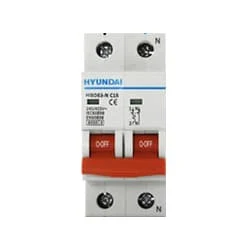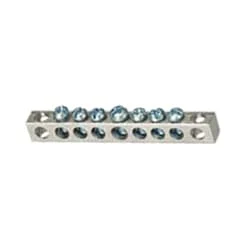Single Phase Distribution Board Wiring:
This Diagram Shows A Distribution Board is a Safe System Designed for Houses or Buildings That Included Protective Devices, Isolator Switches, Circuit Breakers, and Fuses to Connect Safely The cables and wires to the Subcircuits and Final sub-circuits including their associated Live (Phase) Neutral and Earth. A Distribution Board is a Component of an Electricity Supply System That Divides an Electrical Power Feed into Subsidiary Circuits While Providing a Protective Fuse or Circuit Breaker for Each Circuit in a Common Enclosure.
Diagram of Single Phase Distribution Board wiring:
Components Need for this Project:
You can get the components from any of the sites below:
- Single Phase Energy Meter [See Buy Click Amazon]
- RCCB [See Buy Click Amazon]
- DP MCB [See Buy Click Amazon]
- Busbar [See Buy Click Amazon]
Read Also:
Components used to make the Single Phase Distribution Board Wiring:
01. Single Phase Energy Meter
 |
| Fig 2: Single Phase Energy Meter |
02. RCCB
 |
| Fig 2: RCCB |
03. DP MCB
 |
| Fig 4: DP MCB |
04. Busbar
 |
| Fig 5: Busbar |
Thank You for visiting the website. Keep visiting for more Updates
Frequently Asked Questions
The main supply cable comes into the board and is then distributed to the breakers and from there to all the circuits lights fan plugs etc. This video shows a Single Phase Distribution Board Wiring Diagram. distribution board DB is where the electrical power supply is distributed from within the Circuit diagram building home.
Single-phase power supply is a 2-wire alternating current (AC) power supply circuit. Typically, there is one power wire—the phase wire—and one neutral wire, with current flowing between the power wire (through the load) and the neutral wire.
In most of the world, 2 wires suffice for 220 volts single phase (not counting any additional earth protective grounds). In the US, the 240 volts are center center-tapped at the transformer, so you end up with 3 wires- the neutral (center tap) and 2 hot wires of 120 volts each to neutral, and 240 volts hot to hot.
Single phase means you have 2 wires coming from the power supply street, an active wire, usually red, and a neutral Project system wire, always black. To simplify, in a single-phase power supply, the energy flows in via the active, through your meter and main Circuit diagram switch, and onward via RCD/circuit diagram breakers, into the wiring, and to your current appliances.
By far the simplest method of obtaining a single-phase output from a 3-phase power supply is to place a single-phase transformer across 2 phases of a 3-phase power supply. The effect of this system is to pull the full rated current in 2 of the supply lines and zero current in the Circuit diagram third line.


Post a Comment
Do leave your comments